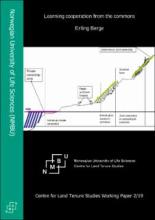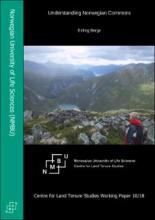Land Library
Welcome to the Land Portal Library. Explore our vast collection of open-access resources (over 74,000) including reports, journal articles, research papers, peer-reviewed publications, legal documents, videos and much more.
/ library resources
Showing items 1 through 9 of 11.Communal forests are a unique land tenure system and comprise a singular legal category in Galicia. Their persistence over time demonstrates that this community-owned resource has overcome the “tragedy of the commons”, showing their capability to successfully develop self-governing institutions.
Local commons are underutilized in resource management models, thus limiting the effectiveness of the commons concept.
The Franks Tract State Recreation Area (Franks Tract) is an example of a complex contemporary park mired in ecological and socio-political contestation of what it is and should be.
This Special Issue contributes to the debate that land grabbing should be discussed as commons grabbing [...]
The topic of large-scale land acquisition (LSLA) has attracted wide interest in the literature and the media. However, there is little work on the gendered institutional changes and gendered impacts on common pool resources (CPR) due to LSLA. The aim of this paper is to address these impacts.
The paper discusses the link between commons as they might have been used in
prehistoric Norway and the rules concerning the exploitation of the commons as
found in the oldest known legislation for regions of Norway, Gulating Law and
Recent debates in social anthropology on land acquisitions highlight the need to go further back in history in order to analyse their impacts on local livelihoods.
The paper reviews the development of the legal status of Norwegian commons from the first known legislation on commons. The development can be divided into 5 periods.
Cambodia has become a principal target of transnational (and domestic) land grabs over the past decade, mostly in the form of economic land concessions (ELCs). The northeastern part of the country—where the majority of Cambodia’s indigenous people reside—is a particular hotspot.








